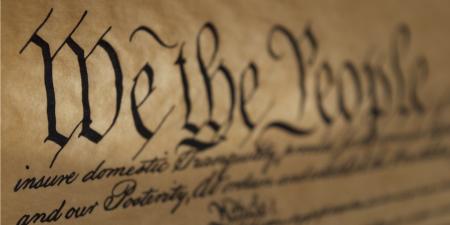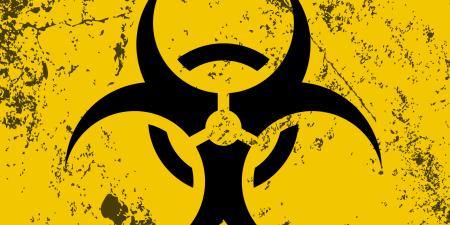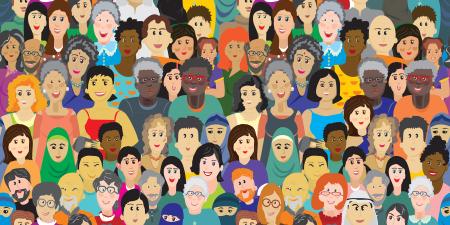Case
Dr. Lee was a physician in a large urban medical center in New York. He received notification from his institution’s director of disaster preparedness that a transatlantic flight originating in Asia had been diverted over concern of a passenger’s displaying symptoms of severe acute respiratory syndrome (SARS), a highly contagious and potentially life-threatening airborne infection caused by the SARS-associated coronavirus (SARS-CoV). Upon landing in New York City, all passengers were transported to Dr. Lee’s medical facility and placed under mandatory quarantine. In accord with Centers for Disease Control and Prevention (CDC) guidelines, exposed individuals would remain in quarantine for up to 10 days after the most recent patient’s development of symptoms. Following the hospital’s disaster preparedness protocol, Dr. Lee reported for duty to the designated quarantine ward.
Among the 57 passengers under quarantine was a 28-year-old man, Joshua, who was returning from his temporary residence in Hong Kong for the purpose of donating bone marrow for his younger brother with advanced leukemia. Joshua was the only living donor match identified for his brother; he insisted that he must be allowed to leave for that purpose. He was not released and remained under mandatory quarantine. Over the subsequent days, Joshua spent much of his time coordinating a donation schedule to correspond with his expected release from quarantine.
On the morning of the tenth day, an elderly patient with diabetes developed a cough with mild dyspnea. She admitted she had been experiencing myalgias and subjective fever for 2 days, but had not alerted the staff for fear of extending quarantine. The newly symptomatic woman was removed from the general quarantine population, and those quarantined were informed of the new 10-day extension. Joshua pleaded with Dr. Lee to release him so that he could provide a life-saving bone marrow donation to his only brother.
Commentary
The issue at hand is whether an individual who is quarantined by a public health official may leave for any reason. To answer this question, we must consider how quarantine works. According to the CDC Web site, quarantine may be used to separate from the general population and restrict the movements of people who have potential exposure to infectious diseases (e.g., cholera, tuberculosis, smallpox, viral hemorrhagic fevers, SARS, pandemic influenza). Quarantine separates seemingly asymptomatic people from the general public because, though they appear healthy, they may in fact be infected and capable of exposing others to the disease. Isolation is the practice of separating actively ill people from those who are healthy [1].
The federal government (more specifically, the secretary for Health and Human Services, aided by the CDC) was given the authority to impose isolation and quarantine by the Commerce Clause of the Public Health Service Act, which confers the authority to regulate foreign and interstate commerce and includes the authority to act to prevent the spread of infectious processes. Individual states also have responsibility and authority to control the spread of disease within their borders, and the 10th Amendment gives them the ability to enforce isolation and quarantine. States may also have individual laws addressing isolation and quarantine to protect the health of their citizens [1].
In short, Dr. Lee is not in a position to decide to break quarantine. No individual has the authority to break quarantine without consulting the local and state public health departments, regardless of the cause. The only circumstance that would make it acceptable to break quarantine is if the life of a quarantined person were threatened—for example, if the patient required lifesaving techniques.
Safeguards are in place, however, to ensure that personal liberty is not violated in the course of protecting the public from infectious diseases. For example, the New York City Board of Health ensures that
individuals who are detained for a period of less than three business days are provided with an opportunity to be heard and to have their individual circumstances assessed. Those detained for a longer period may require the Department to seek a court order within three business days. The Department then must obtain a court order within sixty days, even if the detained individual has not requested release…. Notice of the detainee’s rights is provided to each detainee in writing. For individuals detained for more than three (3) business days, this includes the right to be represented by an attorney provided by the City of New York [2].
Within the legal constraints, Dr. Lee’s first ethical duty is to mitigate the situation for Joshua. Although Dr. Lee is charged by the hospital’s protocol and by law to administer the quarantine, he is still responsible for the individual patients’ well-being and may find that it is necessary to advocate for them. Although Joshua is not manifesting symptoms of the disease, he is still Dr. Lee’s patient, and Dr. Lee has a responsibility to look after his all-around well-being, not just his physical health.
As in any situation where patients seek information and advice from their physicians, Joshua may not know what his options are or how to go about taking advantage of them. Dr. Lee should inform him of his rights—both those detailed above and his right to convene the hospital’s ethics committee. Because Dr. Lee does not have decision-making authority in the hearing, he is not compromising the health or safety of the general population by letting Joshua know his rights. Moreover, whether or not Dr. Lee thinks it would be dangerous for Joshua to leave quarantine, information must not be withheld from the patient to serve the interests of the general population.
Dr. Lee should also help Joshua plan for the possibility of quarantine extension and look for additional donors in the event it has to be enforced. He can contact the brother’s doctors to inform them of Joshua’s status, and they can work together to conduct bone marrow drives in order to seek out another donor. As a physician, Dr. Lee’s first responsibility is to be an advocate for his patients. This does not mean breaking the law or putting society at risk, but seeking solutions that will be beneficial for all involved.
References
-
US Centers for Disease Control and Prevention. Legal authorities for isolation and quarantine. http://www.cdc.gov/quarantine/AboutLawsRegulationsQuarantineIsolation.html. Accessed July 16, 2010.
-
City of New York Department of Health and Mental Hygiene Board of Health. Notice of adoption of amendments to sections 11.01 and 11.55 of the New York City Health Code. http://www2.cdc.gov/phlp/docs/NYC--11.55%20(Notice%20of%20Adoption%20-%20Final).PDF. Accessed August 19, 2010.



